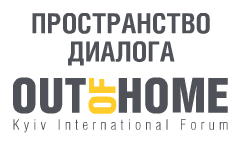Stopping complexes attract every year an increasing number of advertisers.
Recently we see many examples of placement on these carriers.
Branding of stopping complexes to Euro-2012 became the most noticeable. Then a number of partners of the Championship showed interesting decisions on objects of street furniture.



The research specially conducted by the Doors Consulting company in Kiev for BigBoard Ukraine, confirmed in figures advantages of this format.
According to the received results, average values of GRP of the transit shelter is 2,4.
And the number of potential contacts of consumers with a format reaches
to 109 000 contacts/days in zones with a dense traffic.
"If the usual transit shelter is focused generally on passengers of public transport, in a case with branding of a stopping complex, we received good media indicators for both groups: as for drivers, so for pedestrians. Therefore it is possible to say that in places with a dense traffic such format works very effectively",commented the results of research the director of the company “Doors Consulting” Sergey Smolyar.
It is not a secret that the market suffers from overload of carriers. Advertisement makers constantly try to fight against that: operators – by regulation of number of carriers, advertisers – by bright and non-standard decisions in outdoor advertizing.
Branding of transit shelters is perfectly suitable for realization of non-standard placement which won't be lost in "information noise".
The small format and stopping complexes are unique also in possibility of inclusion of different audiences in direct communication.
With various stock it is possible to create brand "show-window" on a transit shelter, and using digital components to make it interactive.
The original project in outdoor advertizing is realized at Sushiya's stop in Kiev in 2013.
"This format has a number of advantages: successful arrangement of constructions (including in the downtown), possibility of branding of big surface and various options of communication with the consumer. This is one of few street formats which allows to interact qualitatively with the consumer without pressing. Such advertizing allows to solve various types of tasks, working as in a single format, so in a format of a network covering",shared expert opinion Alexey Dotsenko, the strategist of Master AD Agency.
Transit shelters became a creative source for many advertisement makers around the world:
Pepsi's unbelievable campaigns
JCDecaux Finland: Ben & Jerry's took over Helsinki, Greek style 2014
JCDecaux Australia: Wolf of Wall Street Innovate
JCDecaux Norway Q Sjokolademelk FreshSquad
This format in modern European execution is ideally suited for the central part of the city and organically fits into an urban environment. Today the design of a transit shelter of JCDecaux is officially recognized as one of samples for stopping complexes in the capital.
Active development of this segment in Ukraine began since 2007. It was the beginning of street furniture history of JCDecaux/BigBoard in Ukraine. Over time objects of street furniture began to appear in all million-plus cities.
"Stopping complexes are carriers which are in the closest contact with consumers and carry out, first of all, social information function. Their proximity to target audience draws attention of advertisers.
Many brands seek to introduce original plots in advertizing, we work over improvement of opportunities of carriers. Neon illumination, cut-out elements are actively used today at stops. The next stage of development is increase interactive, digital-opportunities of advertizing panels", shared plans for the future Elena Beskhlebnaya, the sales director of BigBoard Ukraine group.



